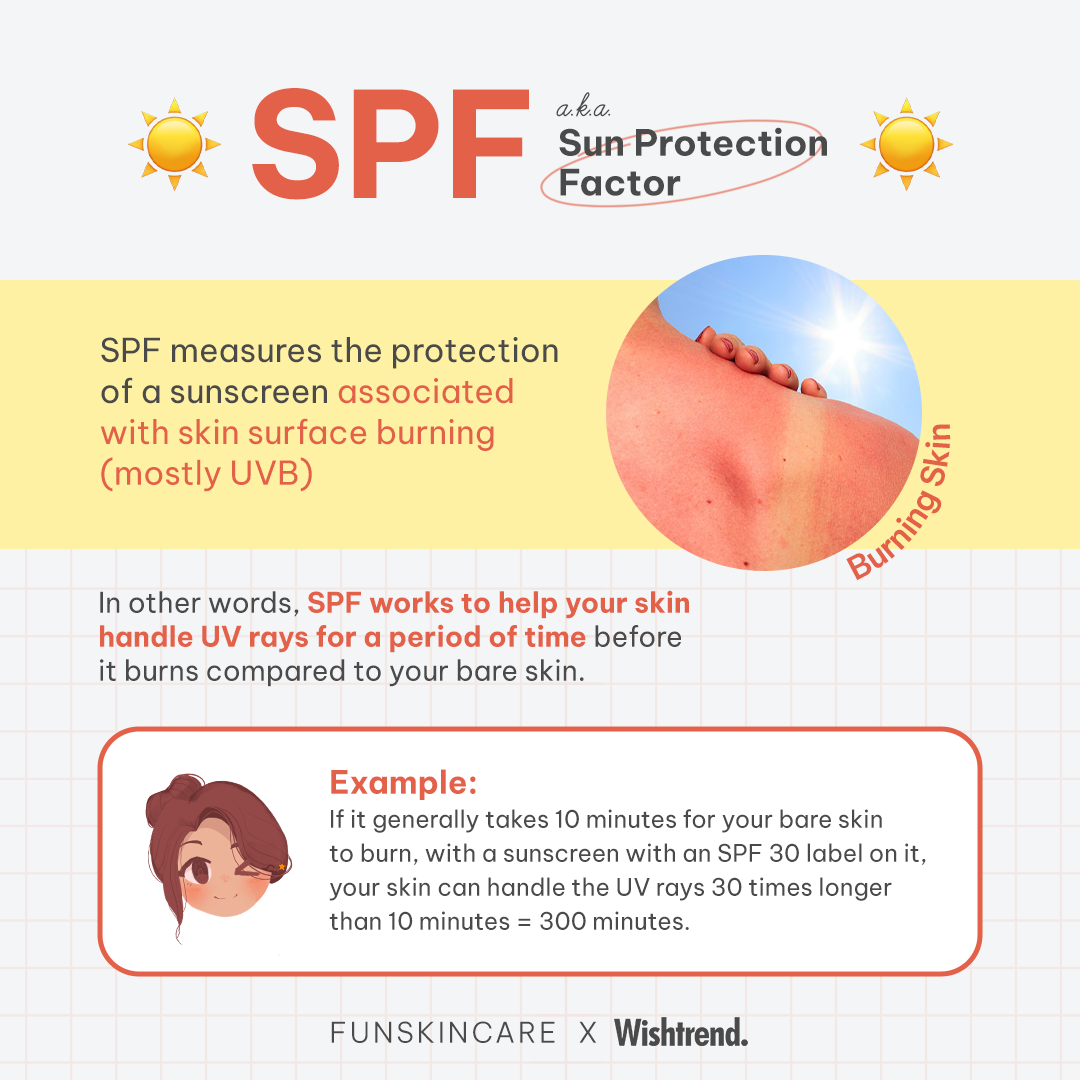How to Understand Your Sunscreen Label
by Claudia Christin on Mar 12, 2023

Due to recent increased awareness of chronic sun exposure, it has been one of the most looked for products in the market. However, choosing one can be a really tough task especially those labels written in front of the packaging, SPF, PA and many others, are so crucial to help you pick the right sunscreen that is suitable for you and your lifestyle.
If you are new to the world of sunscreen, you don’t have to worry, here’s a little guideline for you that will get you covered on all the commonly seen labels on sunscreen!

SPF (a.k.a. Sun Protection Factor)
SPF measures the protection of a sunscreen associated with skin surface burning. In other words, SPF works to help your skin handle UV rays for a period of time before it burns compared to your bare skin. The duration of the protection SPF has for your skin is determined by the number it bears.
For example, it generally takes 10 minutes for your bare skin to burn, with a sunscreen with an SPF 30 label on it, your skin can handle the UV rays 30 times longer than 10 minutes.
If the sunscreen has an SPF 50 label on it, your skin could handle the UV rays 50 times longer than 10 minutes.
SPF protects your skin from UV rays that burn your skin which is mostly the UVB rays. According to AAD’s scientific explanation, the number of SPF also tells us how much of the UVB rays the sunscreen can filter out. SPF 15 filters out 93% of UVB while SPF 30 filters out 97% of UVB. Hence why it is recommended to use SPF 30 or higher.

PA (a.k.a. Protection grade of UV-A)
PA measures the protection a sunscreen provides from UVA which is associated with aging and hyperpigmentation. In other words, PA works to help your skin handle UV rays for a period of time before it turns brown compared to your bare skin. It mostly measure the protection of your sunscreen against UVA.
The duration of the protection PA has for your skin is determined by the number of plus it bears. PA is considered as the simplified version of PPD (persistent pigment darkening) measurement used in Europe.
(+) One plus equals 2 - 4 PPD (some protection)
(++) Two plus equals 4 - 8 PPD (moderate protection)
(+++) Three plus equals 8 - 16 PPD (high protection)
(++++) Four plus equals >16 PPD (extremely high protection)
For example, it generally takes 10 minutes for your bare skin to turn brown, with a sunscreen with a PA++ label on it, your skin can handle the UV rays 8 times longer than 10 minutes. If the sunscreen has a PA ++++ label on it, your skin could handle the UV rays more than 16 times longer than 10 minutes.
P.S: Not all countries practice this label. It is mostly seen in Japanese, Korean and other Asian counties.

Broad spectrum
A broad spectrum sunscreen protects your skin from both UVA and UVB. It helps prevent skin cancer, early skin aging (wrinkles, sagging skin, premature age spots), as well as sunburn.

Blue Light Protection
Blue light, also known as high-energy visible light (HEV light), also ray from the sun. Chronic and prolonged exposure to blue light can cause changes in skin cell structure, causing cell shrinkage and cell death. Over time, these changes can accelerate the aging process, revealing wrinkles and other skin damage”.1
Sunscreen with blue light protection helps protect your skin from the visible light (blue light) from the sun or other sources of bluelight (devices, lamps, and more). It usually contains iron oxide, zinc oxide, and antioxidants.

Water-Resistant
Water-resistant sunscreen is a label for a sunscreen that can remain effective for 40-80 minutes while you are swimming / sweating. The sunscreen must undergo standardized testing to earn the label and the results can be categorized into two.
Water-resistant: sunscreen stays effective for 40 minutes in the water.
Very water resistant: sunscreen stays effective for 80 minutes in the water.
When wearing water-resistant sunscreen, you will need to reapply it after 40 minutes since the protection is not effective anymore after 40 minutes. If you are wearing a water-resistant sunscreen on dry skin (and remains dry after hours), you will still need to reapply after 3-4 hours, just like when you are using regular sunscreen.
Fun fact: the word waterproof has been banned and no longer used in sunscreen label.

Chemical vs Physical Sunscreen
The two main types of UV filters. Here are some characteristics of both sunscreen that hopefully can help guide you on choosing the right one for you.

UPF (a.k.a. Ultraviolet Protection Factor)
Since sunscreen does not filter out 100% of UVB, we are recommended to seek shade or sun-protective clothing. UPF is often found in clothing that claims to be sun-protective clothing. UPF indicates how much UV radiation (UVA and UVB) allows to penetrate and reach our skin.













